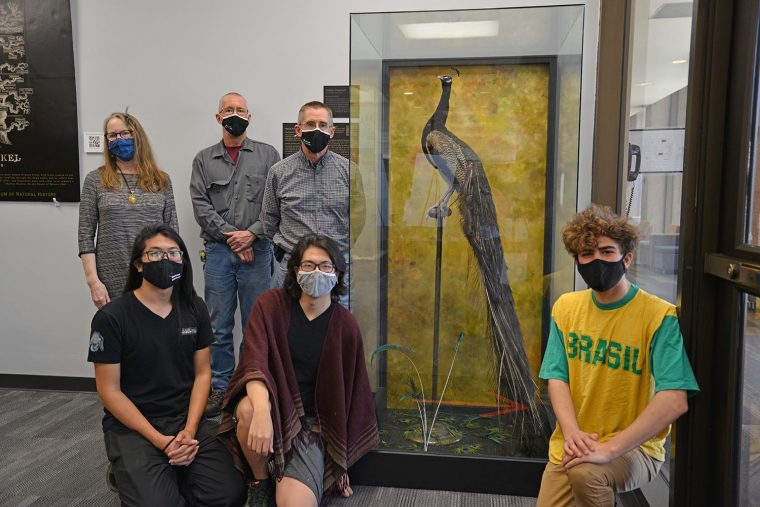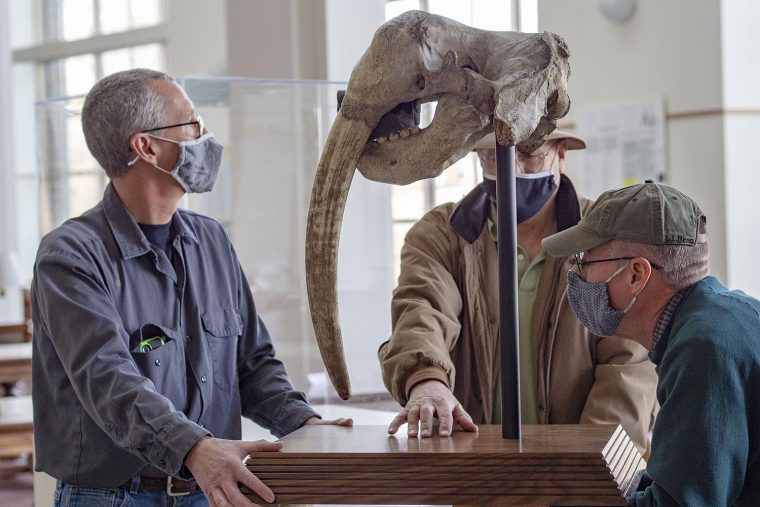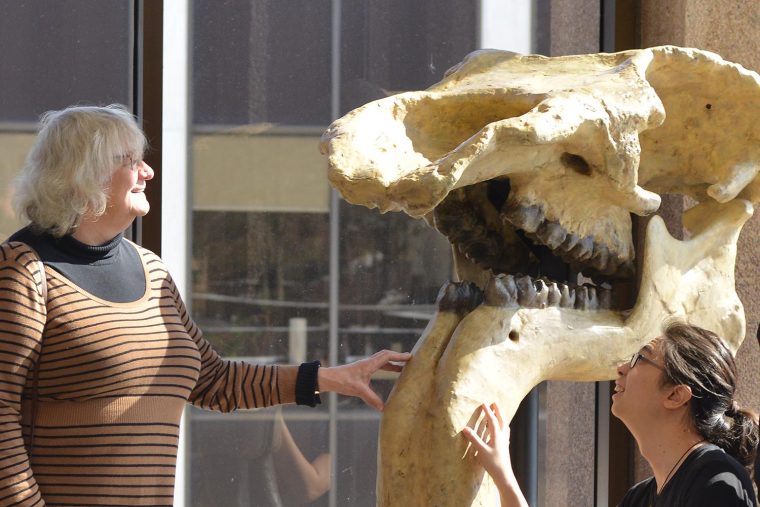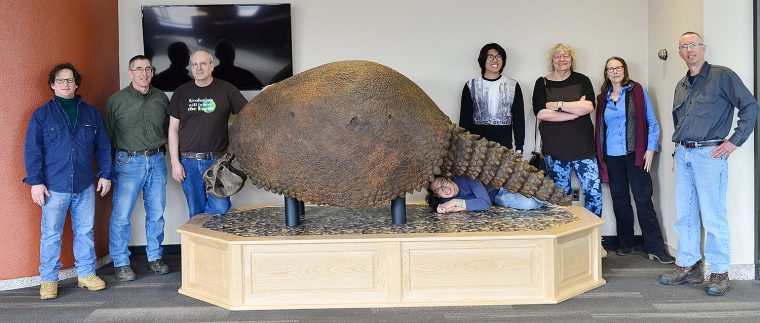The entrance to the Science Library in Exley Science Center houses a taxidermied peacock that has been restored by faculty and students in the biology department. The peacock, originally rediscovered in 2018 and put on exhibit in spring 2019, is part of a bird collection that was first displayed at the museum in Judd Hall and now belongs to the Wesleyan Museum of Natural History. The restoration team, which includes Professor of Biology Ann Campbell Burke, Yu Kai Tan BA/MA ’21, Andy Tan ’21, and Fletcher Levy ’23, recently updated the display to include new signage and fresh peacock feathers…
Olin Library's newest resident is looking for a good book to sink his tusk into. The skull of a one-toothed walrus, which was installed in the Campbell Reading Room on Jan. 20, is the University's latest exhibit on display from the former Museum of Wesleyan University (1871–1957). The piece was donated to Wesleyan 145 years ago by the Smithsonian National Museum of Natural History but has spent about half of its university life in storage. The 26-pound skull, which is missing its right tusk, belonged to a Pacific walrus (Odobenus rosmarus divergens) living along the Ugashik River in Alaska in…
As part of the University's efforts to "activate campus," a third prehistoric creature has taken up residence at Wesleyan. The new Mosasaur exhibit is on permanent display inside Olin Library and is a collaboration of faculty, student, and staff efforts. Mosasaurus hoffmannii Mantell (Mosasaur), a marine lizard, lived in the oceans during the Late Cretaceous period (66 to 68 million years ago) when the last dinosaurs walked the Earth. Mosasaurs had long, snake-like bodies with paddle-like limbs and flattened tails. Some specimens grew to be more than 50 feet long. In 1871, chemist Orange Judd of the Wesleyan Class of…
(more…)
For the past 60 years, a massive megafauna mammal thrived in crates buried in Wesleyan's tunnels and attics. This month, the creature, known as a Glyptodon, has emerged in Exley Science Center for public viewing. Although the armored armadillo-like animal became extinct more than 10,000 years ago, Wesleyan acquired a fossil cast in the 1870s, where it became a showpiece at the university's Orange Judd Museum of Natural Sciences. In 1957, the museum closed and thousands of artifacts, including the Glyptodon, were haphazardly stuffed into crates and boxes and hauled to multiple locations throughout campus. "After the museum closed, everything was scattered all…





